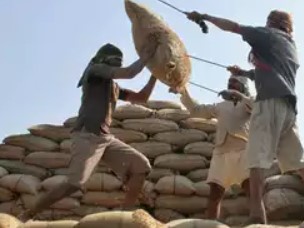
India is considering easing restrictions on non-basmati rice exports as inventories surge and a new crop is set to be harvested. This move follows recent measures to boost farmers’ incomes ahead of state elections. The government is also looking at adjusting policies on parboiled and non-basmati white rice exports.
The Economic Times, Reuters, Sep 18, 2024
India is considering easing curbs on non-basmati rice exports, a senior government official said on Wednesday, as inventories in the world’s biggest exporter of the grain surged and farmers are set to harvest a new crop in the coming weeks.
Last week, the government removed a floor price for basmati rice exports to help thousands of farmers who complained about a lack of access to lucrative overseas markets such as Europe, the Middle East and the United States.
“That is under consideration,” Sanjeev Chopra, the most senior civil servant at the food ministry, told a news conference when asked whether India would tweak policies on parboiled and non-basmati white rice exports.
In July, Reuters reported that India was considering replacing the 20% export tax on parboiled rice with a fixed duty on overseas shipments, and New Delhi was also examining the possibility of resuming white rice exports.
Buoyed by copious monsoon rains, farmers have planted rice on 4.1 million hectares, up from 3.9 million hectares last year and 4 million hectares of the past five years of the average area under the staple.
After a weak start in June, the monsoon has revived and rains have been 7.6% above average so far.
India’s weather office defines average or normal rainfall as 96%-104% of a 50-year average of 87 cm (35 inches) for the four-month-long season beginning in June.
Farmers plant summer-sown rice during the rainy months of June and July and harvest the crop from October.
Rice stocks at the Food Corporation of India on Sept. 1 stood at 32.3 million metric tons, 38.6% higher than last year, giving the government plenty of elbow room to consider relaxing rice export curbs.
Easing rice export curbs could help Modi’s Bharatiya Janata Party (BJP) mollify angry farmers in Haryana, where voters will elect a new state assembly on Oct. 5, and in the western state of Maharashtra, where elections are due later this year.
The BJP lost nearly 75 rural seats in this year’s general elections.
Chopra also said the government was considering raising domestic ethanol prices and the rate at which sugar mills sell the sweetener to local traders.
Reuters earlier reported that India was considering raising both ethanol prices and the local sugar sale price.
